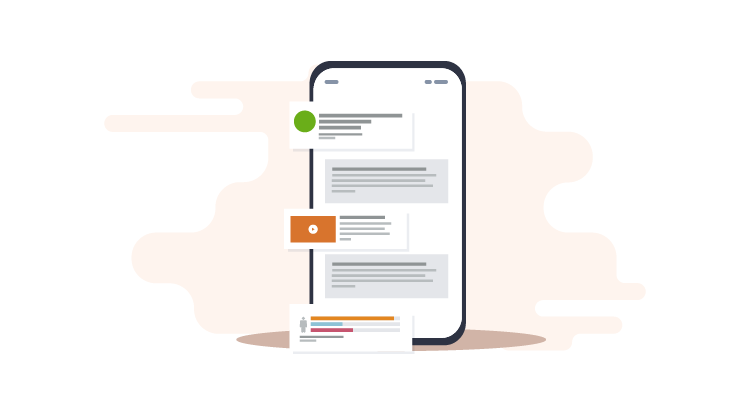For most publishers, regardless of their industry, to say that 2020 has been a challenge is an understatement. However, since the onset of the pandemic, while so many channels have tumbled, email publishing has flourished. Email subscriptions have soared, as due to COVID-19 restrictions people are spending more time at home and more time on connected devices.
Now, even more publishers who focused on email newsletters as the central hub for their communications have begun to consider programmatic email monetization.
In this blog post, we’ll focus on the four powerful lessons 2020 taught us about programmatic email monetization. These insights can help publishers maximize revenue by introducing programmatic native ads or sponsored content within their newsletters.
Table of Contents
- Lesson 1: Email newsletter monetization is a tactic businesses should quickly adopt for increased revenue.
- Lesson 2: You need to take control over your digital marketing strategy. No control, no gain.
- Lesson 3: Programmatic advertising completely depends on audience data.
- Lesson 4: Use past challenges to drive future success.
Lesson 1: Email Monetization Is a Tactic Businesses Should Quickly Adopt for Increased Revenue.
Email remains a powerful resource for companies regardless of their industry sector and has become one of the most stable channels of communication during the pandemic. Email builds both habit and loyalty, which is especially important in the new media business model.

Programmatic email monetization is a safe strategy that provides publishers with immediate revenue from their everyday business communications: both transactional emails and newsletters.
This form of email monetization uses native ads within your newsletter to produce an additional source of income that grows along with your list volume and the number of people who click on these ads.
It’s an effective strategy for advertisers as well because they can reach a more targeted audience within content that the audience is more likely to read.
When publishers offer their subscribers links to resources they need and advertisers promote their products and services to likely customers, everyone wins.
Lesson 2: You Need to Take Control over Your Digital Marketing Strategy. No Control, No Gain.
Publishers and advertisers must continuously adapt to the constantly changing digital marketing environment. One change 2020 has introduced is the need to invest in owned content channels, such as email newsletters and your website or blog, as your main communication hub.
With the end of third-party cookies following your target customers around as they browse through the Internet, publishers have an opportunity to monetize their own content through AI-powered email monetization.
Instead of using social media ads to drive revenue, use social media to add audience members to your email list, allowing you to communicate with them on your terms.

To maximize the return on your investment, though, you need top-level quality, both in the body of your newsletters and in the ads that appear in them.
These ads, called “native ads,” should relate to the content, blending into the newsletters’ profile and design. Unlike email marketing’s long-term gains, these ads generate revenue immediately. It’s simple, easy, and effective.
Likewise, make sure to partner with an email monetization provider that carefully curates the ads running through their platform.
Lesson 3: Programmatic Advertising Completely Depends on Audience Data.
Data is a critical factor in developing every facet of your digital marketing strategy, especially programmatic advertising.
Gathering valuable information about your audience is the most efficient way to get relevant ads in the hands of those recipients who need the products, services, and information that these ads feature.

Using AI to analyze your audience data can produce accurate ad recommendations, providing your subscribers with a personalized user experience. It will also increase the demand for quality content that publishers need to develop in order to maintain a robust and long-lasting relationship with their readers.
Today’s – and tomorrow’s – subscribers have become highly selective.
Content, including targeted ads, that helps your audience adapt to future trends provides added value to your audience and more revenue for your business.
With the downfall of third-party cookies, advertisers have had to turn to programmatic ads within a company’s owned content, as well as paid search.
With programmatic ads’ AI-selected audience data never so relevant, US advertisers’ spend grew over 10 percent during 2020. US projections for 2021 estimate that programmatic ad spends will grow by even more – 24.1 percent.
Worldwide, programmatic ads have become advertisers’ largest data-based marketing expenditure, raking in $ 24.7 billion during 2020. The outlook appears even better for 2021.
Experts estimate that it will retain its first-place slot in 2021, growing by 24.1 percent to a value of $ 30.6 billion.

Lesson 4: Use Past Challenges to Drive Future Success.
Like most, your business, as well, has likely documented both the high points and the challenges it has faced during the COVID-19 pandemic. Discovering your ability to adapt to those challenges is one of the positive developments the pandemic brought along with it.
Use that knowledge to do better in 2021. With programmatic advertising on target to hit an all-time high in 2021, now is the time to put it to work for your newsletters.
The pandemic has brought an increase in online interactions, and brands that have communicated more via email have seen higher open rates and click-throughs.
On the other hand, email remains a powerful resource for companies regardless of their industry sector and has become one of the most stable channels of communication during the pandemic.

Therefore, with people spending more time online, audience engagement is a key to success. Adapt your content to include emotional communication and to increase trust among your readers.
Even for B2B companies, 90 percent of purchasing decisions have an emotional component. A human touch, therefore, is always a valuable aspect of content creation.
If you use email as your primary marketing channel – and you should – selling ad space in your newsletters can bring in more revenue.
Programmatic native ads’ personalized appeal provides a subscriber experience that is second to none. It’s an audience-oriented strategy that is the future of marketing.
By working on increasing your subscribers’ list, you can take a new approach in your marketing strategy. Ads in newsletters work better than anyone expected – and you can use them to monetize email newsletters during the coming year to position your company as a leader in your field.
Digital & Social Articles on Business 2 Community
(49)
Report Post







